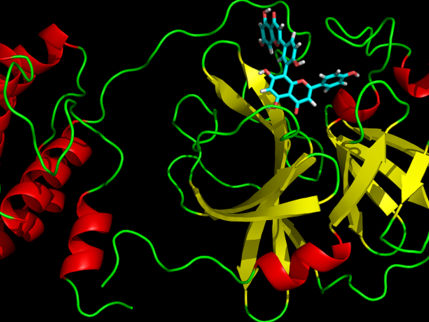CSIC researchers identify a new class of antivirals against covid-19
New antivirals act by blocking virus entry into the host cell through interaction with the 'spike' protein
Researchers from the Consejo Superior de Investigaciones Científicas at the Instituto de Química Médica (IQM-CSIC), the Instituto de Biología Integrativa de Sistemas (I2SysBio-CSIC-UV) and the Instituto de Biomedicina de Valencia (IBV-CSIC), members of the Plataforma Temática Interdisciplinar (PTI) Salud Global, have identified and characterized a new class of antivirals against SARS-CoV-2. These act by blocking the entry of the virus into the host cell through its interaction with the spike protein (protein S). The work, the result of the interdisciplinary collaboration of the authors in the framework of the PTI+ Global Health, is published in the Journal of Medicinal Chemistry.
In the early stages of the replicative cycle of SARS-CoV-2, the causative agent of covid-19, the interaction between the viral S protein and the host cell's primary receptor, angiotensin-converting enzyme 2 (ACE2), occurs, followed by internalization of the virus. These early stages of infection are particularly attractive in the search for antivirals since compounds that act at this level could be used both therapeutically and prophylactically. Previous studies carried out by IQM-CSIC researchers indicated that tryptophan derivatives (an essential amino acid) are good candidates for use as antivirals, since they have the ability to inhibit the entry of different viruses and have low cytotoxicity.
In this study we have screened a collection of different multivalent tryptophan derivatives with potential antiviral activity. Using VSV (vesicular stomatitis virus) pseudoparticles capable of expressing the S protein of SARS-CoV-2, the interaction of the compounds in the collection with the viral spike protein was evaluated.
Following this screening process, the scientists have identified a hit compound, a molecule with the desired pharmacological activity, which has been the subject of study and optimization, obtaining a thiophenyltryptophan C-2 trimer, active and useful for more advanced clinical studies. The studies to which this compound has been subjected include the validation of its antiviral activity against genuine SARS-CoV-2. In addition, further analyses with Thermofluor and microscale thermophoresis demonstrate the interaction of these compounds with the RBD receptor binding domain of protein S, preventing interaction with ACE2.
Finally, the researchers used high-resolution electron cryomicroscopy to characterize the structure of protein S in the presence and absence of the tested hit compound, which has contributed to elucidate the mechanism of action of this new class of antiviral compounds.
Note: This article has been translated using a computer system without human intervention. LUMITOS offers these automatic translations to present a wider range of current news. Since this article has been translated with automatic translation, it is possible that it contains errors in vocabulary, syntax or grammar. The original article in Spanish can be found here.
Original publication
Other news from the department science

Get the life science industry in your inbox
By submitting this form you agree that LUMITOS AG will send you the newsletter(s) selected above by email. Your data will not be passed on to third parties. Your data will be stored and processed in accordance with our data protection regulations. LUMITOS may contact you by email for the purpose of advertising or market and opinion surveys. You can revoke your consent at any time without giving reasons to LUMITOS AG, Ernst-Augustin-Str. 2, 12489 Berlin, Germany or by e-mail at revoke@lumitos.com with effect for the future. In addition, each email contains a link to unsubscribe from the corresponding newsletter.
























































